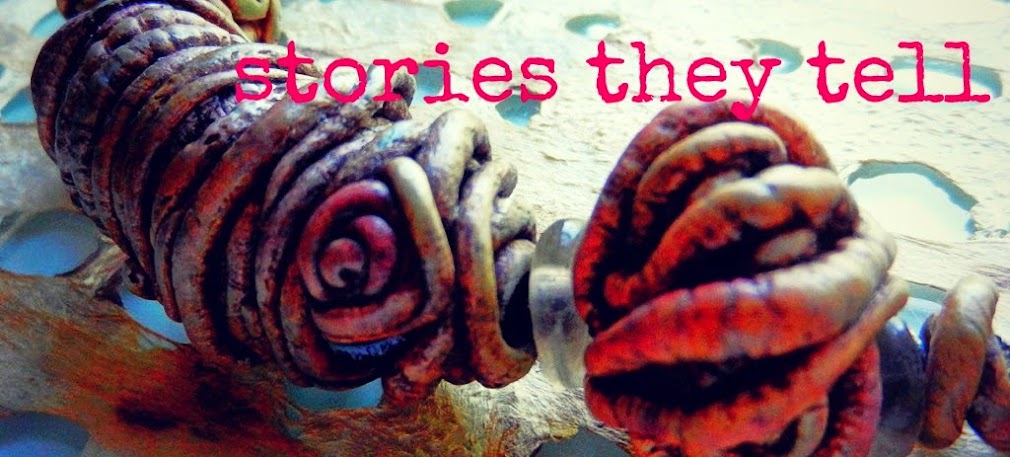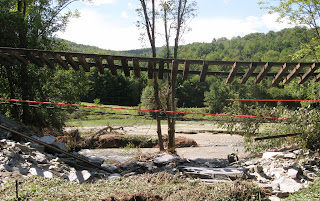Using the focal and the clasp is mandatory, but anything from your own stash can be used to round out the rest and you can choose to use the coordinating beads or not.
In my opinion, the real challenge is to make something in your own style using someone else's interpretation, expressed by the style of the components of the Bead Soup that they send you. My partner was Cynthia Deis, jewelry designer and owner of Ornamentea. The focal she sent was a beautifully-crafted lampwork bead with a tree theme by Lisa Daly, the clasp was a handmade by Cynthia, and the accompanying beads were small Elaine Ray ceramic forms and beads and some Czech glass leaves and faceted rounds.
Now my style is more tribal and usually incorporates large elements. My beads have a soft sheen and are not shiny. Gone are the days of Flecto Varathane for me! But lampwork is shiny and glimmery, so how to incorporate it into my own style? I had to solve the same issue in my previous BSBP piece, Mistress Boleyn's Necklace, so after some musing, I came up with gilt! In the tease post I did for this year's BSBP, I showed a piece of polymer done in multiple gilded colors to mimic a wooden Indonesian screen. I decided to use the same technique to frame the lampwork focal so its jewel-like glow was set off and enhanced by metallic paint.
Since the theme of the focal was a tree, I decided to use woodgrain and branches as a background for the polymer “bezel”. Lately I've been influenced yet again by an HBO production-- The Game of Thrones-- in which gardens dedicated to the old gods are planted with trees called “weirwoods”, so I used handcarved branches on a woodgrain textured background to hold the focal and provide a surface for texture, color and gilt. The same technique used for the layered bezel also created the three-strand connectors that hold the beaded wires.
Now, how to incorporate all the small beads into the design? I've been using wire-wrapping a lot lately so the solution was to wrap and string them around forged strands of heat-patinated copper. I drew the patterns onto paper, enlarged them on a copier and used them as templates as I worked. They were then attached to the focal piece with polymer, textured and cured in place. The amazing thing about polymer clay is that it can be cured again and again without harm so layers can be built up and wires can be held in place.
After adding layer upon layer of color with heat-set oil paint, acrylics and gilders paste--a technique I'll be teaching in a workshop at ArtBliss in D.C. next weekend--I decided that simple bookchain links in copper and steel would be appropriate to match Cynthia's clasp and finish off my gorget. (def: a metal collar designed to protect the throat, later used as an ornamental accessory on military uniforms).
As I've said before, I believe that perseverance is the key to compelling design – to keep working into it, adding layers of color, shape and texture. I design with the intent that when people see my pieces, they are inspired to invent a story about them. With “Norweigan Wood”-- my title for this piece-- I hope I've achieved my goal.
"Norweigan Wood"
Focal lampwork bead
Clasp detail
Here's the link for the entire list of 362 participants/partners of the Bead Soup Blog Party. Grab a cup of coffee and have fun-- there's lots of great design to enjoy! And thanks for visiting!













